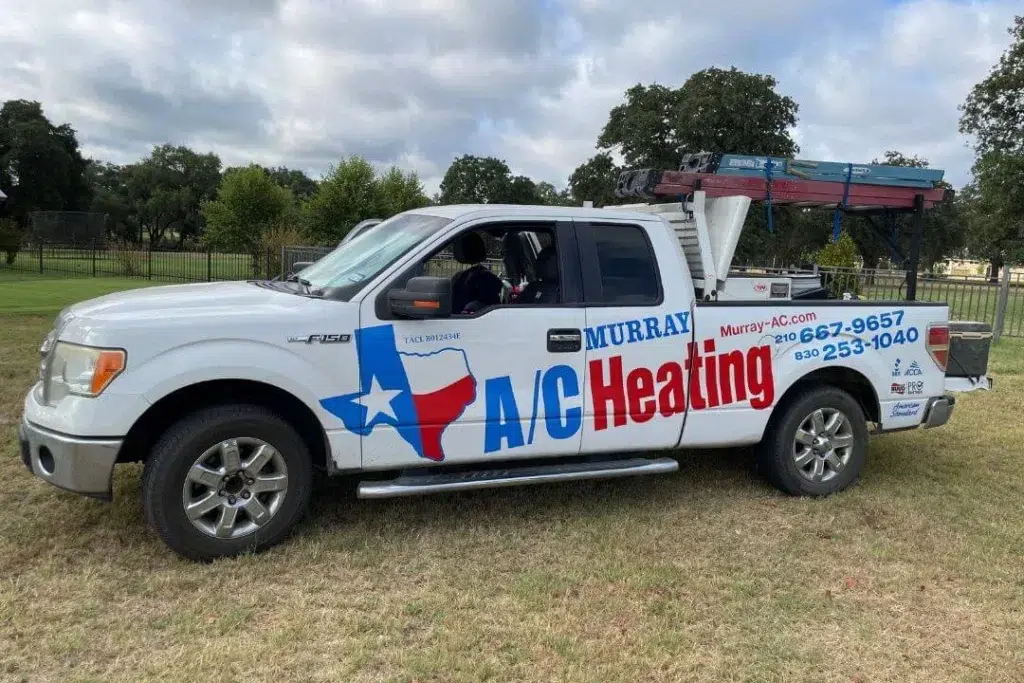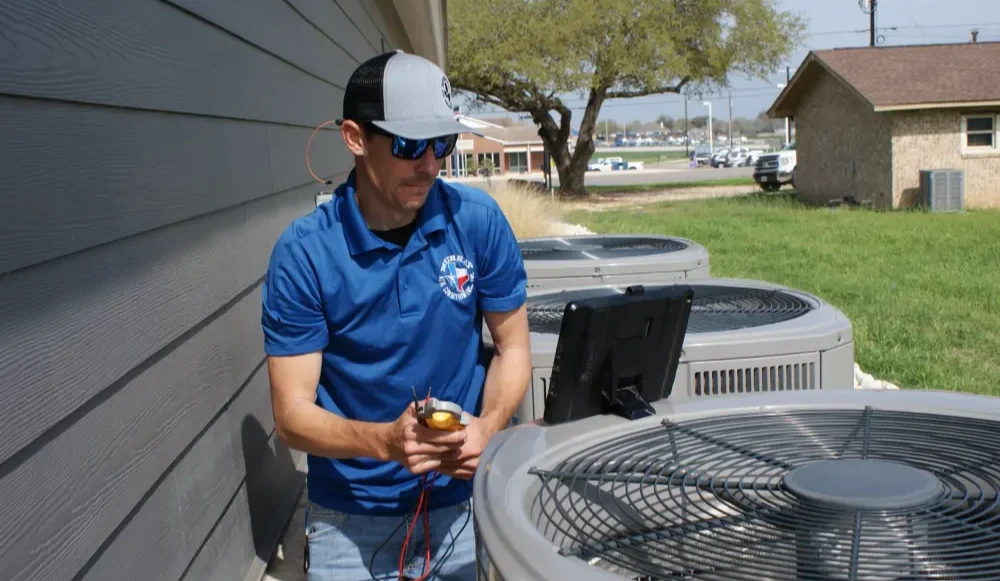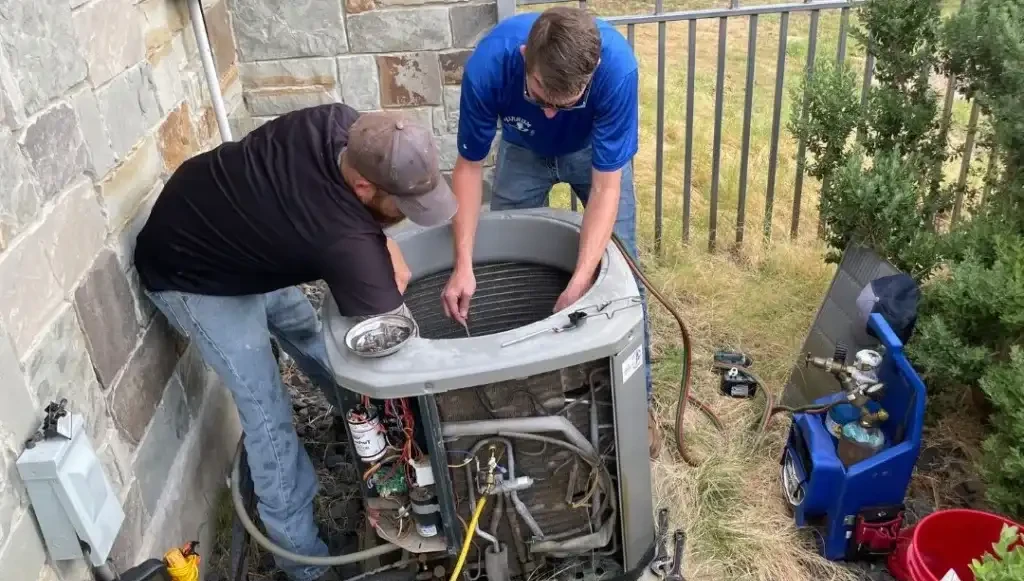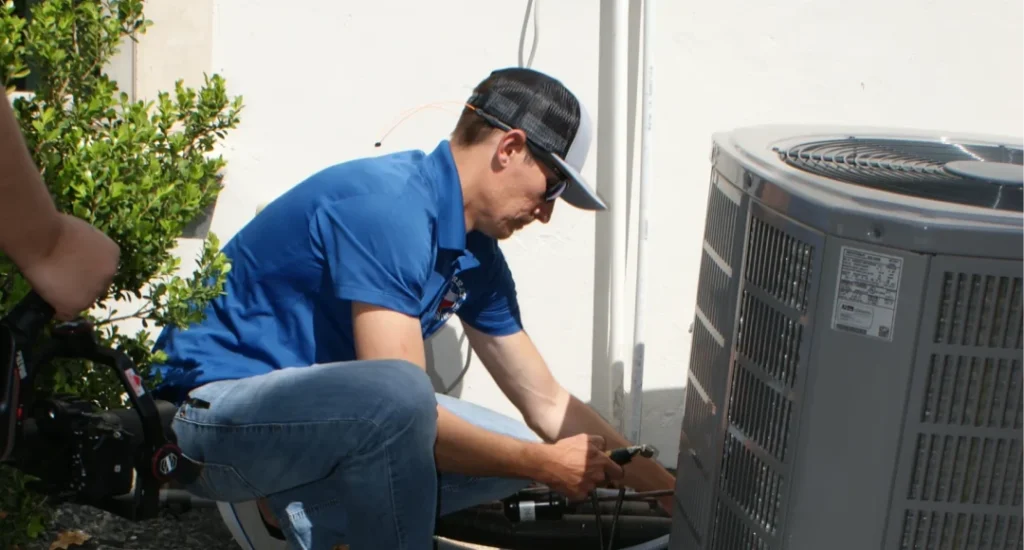Heat Pump Installation
Comfort All Year. Savings Every Month.


Why Install a Heat Pump
Our Heat Pump Installation Process
Step 1: In-Home Visit
We come to your home and listen to your needs. We look at your space, your existing ductwork, and your home’s electrical system. This helps us recommend the right heat pump system.
Step 2: Choosing the Right Heat Pump
Not every home is the same. We match you with a properly sized heat pump that fits your cooling capacity needs, indoor unit, and outdoor unit placement. The goal: comfort, lower operating costs, and energy efficiency.
Step 3: Preparing Your Home
We check your ducts for air leaks, make any air duct alterations, and confirm the electrical wiring is ready. A safe and leak-free connection means better performance and fewer problems later.
Step 4: Professional Installation
We install the heat pump, connect refrigerant lines, and set the outdoor unit on a composite pad for stability. We make sure the system meets all installation requirements.
Step 5: Testing & Walkthrough
We test every part of your new HVAC system, including the air handler, indoor evaporator coil, and thermostat controls. Then we show you how it works, explain maintenance tips, and answer questions.

Benefits of Installing a Heat Pump
- Cut your utility bills every month
- Stay comfortable in San Antonio’s hot summers and cool winters
- Use less energy and reduce your carbon footprint
- Enjoy a system that lasts for years with proper care
- Save even more with rebates and incentives

About Murray Air Conditioning
Frequently Asked Questions
How long does a heat pump installation take?
Most heat pump installations take less than a day. If you need new ductwork or electrical wiring, it may take longer. Our team always explains the installation process up front, so you know what to expect.
Do I need to replace my existing ductwork?
Not always. If your ducts are sealed, leak-free, and the right size, we can use them with your new heat pump system. If your ducts have air leaks or are too small, we’ll recommend air duct alterations so your indoor and outdoor units work at peak efficiency.
Are heat pumps good in colder weather?
Yes. Air source heat pumps are perfect for warmer climates like La Vernia and San Antonio. They provide reliable heating in our winter season without the need for a gas furnace. In colder regions, some homes may use a dual fuel system for backup, but that’s rarely needed here.
What kind of maintenance does a heat pump need?
Heat pumps need regular service, just like an air conditioner or furnace. We suggest two tune-ups a year. Our maintenance includes checking refrigerant lines, the indoor evaporator coil, the outdoor unit, and electrical wiring to keep your system efficient and avoid costly repairs.
How much does a new heat pump cost?
The cost of installation depends on how big your home is, how much cooling you need, and whether you need to change the ductwork. A system that is the right size for your needs will save you money over time by lowering operational costs and energy use. We give you quotes up front, so you won’t be shocked by any extra fees.
Are heat pumps really energy efficient?
Yes. Heat pumps transfer heat instead of creating it, which makes them one of the most efficient HVAC systems available. Many homeowners see their utility bills drop right away. New heat pump models often qualify for financial incentives or rebates, making them even more affordable.
Will a heat pump work with my home’s electrical system?
Most homes are ready for a heat pump. If upgrades are needed to your home’s electrical system, we’ll explain the installation requirements and handle the work safely. We make sure your system is set up for long-term performance.
What if I already have an air conditioner or gas furnace?
You can replace both systems with a new heat pump. We can create a dual fuel system for you that only runs your newer gas furnace when the temperature outside drops very low. That way, you may save money and still have backup heat if you need it.
